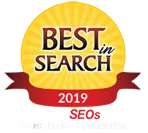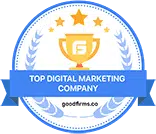
In this post, I will show you how to best optimize your website using on-site optimization strategies. To become more relevant in the major search engines like Google and Yahoo, you have to work on the on-site optimization techniques, which means the elements you optimize on your pages. The off-site optimization factors include the link building techniques you use to gain more quality and quantity link partners from high Google Page Rank and Authority partners, which plays a very important role to gain top placements. Studies have shown that the off-site optimization accounts for about 65-70% of your search engine rankings and sometimes even more depending on the keyword.
On-site Optimization Strategies:
On-site optimization is the same thing as page optimization. Page optimization is the process of making sure that your website complies the most effective way possible in relation to the search engines. Once you have researched and selected the most appropriate keywords for your business, you need to implement them in a systematic way as I am about to show you. For every page on your website, you should focus on about 1-3 keywords to make the page highly targeted and focused. If you try to optimize many keyword phrases on one page, there is a chance your page will be over optimized and the effectiveness of each individual keyword phrase goes down.
The title tag is the most important tag for your website. Many times, I see companies list their company name in the title which would be mostly applicable for big corporations, but for most business owners you want to place your most important keywords in this tag. It’s very important to place your most important keywords as early as possible in the title tag as the search engines deem those keywords more important (carry on more weight for ranking purposes). If you really need to place your company name in the title tag, I would recommend to place this at the end of the title tag.
Currently, Google truncates your title tag at 70 characters including white space, so try to get all your keywords within this amount. Make sure your title tag is natural looking and compelling. Remember the words you put in the title will show up as the title link in the search engine results pages (SERPs). Just as important as it is to gain high rankings, you also want a high click-through ratio (ie many people click on your listing).
A great idea for constructing your title tag is to overlap keyword phrases, which can help you gain many high rankings for multiple search phrases. For instance, if you are a financial consultant, then you could construct the title as: Professional Financial Consultation Services. This would increase the chances that you could gain high rankings for these phrases:
a) professional financial consultation services b) professional financial consultation c) financial consultation services
and any other variation of them...
As you can see, this is a great way to keep your title tag concise which will definitely help those phrases to gain high relevancy score. The other two tags below the Title tag are the description and the keywords tag (meta tags). These tags are not so important anymore, but it would not hurt to add your most important keywords here as well. Currently, Google have publicly stated that they do not consider the keyword meta tag anymore in their algorithms. However, the Meta Description tag is important as this sentence shows up in the SERPs as well. Whatever you put in here will determine whether your potential clients click on your listing versus your competitors.
As mentioned before, I recommend to focus on about 1-3 keywords phrases per page. This means if you place those phrases in the title tag, you also should use those phrases in the Meta description and keyword tags to establish a theme for the page. Again, try to list your most important keyword phrases as early as possible in the tags. The phrases in the keyword tags should be comma separated. Just like the title tag, you need to write the description tag in a compelling manner (optimize it for humans as well as the engines) to boost your click through ratio on the search engine results pages (SERPs).
In addition to this, you should optimize the heading tag (h1) on every single page of your site. Again, the keywords you optimized for in the title need to be placed in the heading tags as well in a natural looking manner. The purpose is to reinforce the title tag using these heading tags. You can even use the (h2 and h3) tags to break up the text on your page, which helps increase readability.
It’s very important that you not only optimize for the search engines, but you keep in mind that a human being has to read this page as well. I would recommend about 2-3% keyword density. Again, sometimes this is not feasible to achieve this amount and in this case, just list as many as you can, but again it should make sense for a human to read it. Try to include the most important phrases as early on as possible, preferable on the top left section of your site. By positioning them further up on the page, the relevancy for those phrases goes up as well.
The navigation on your website should be text based. If you decide to use graphic navigation, the search engines cannot read the words as these are embedded as images. In this case, you need to use alt text tags. If you use image based navigation, make sure to use text footer links on the bottom of each page.
As always, you should create a Google site map for your website to ensure that Google bot will index all your pages. You should upload this in your Google Webmaster Tools and also upload on your web server. Now, go ahead and do it. Good luck!!
Contact us today and receive a free consultation.








[…] sites came along (Yahoo wasn’t a search engine back in the late nineties) and made SEO (search engine optimization) gain more […]